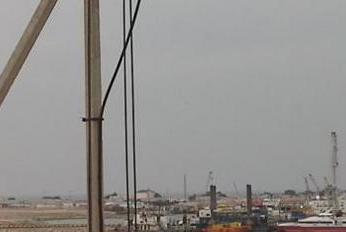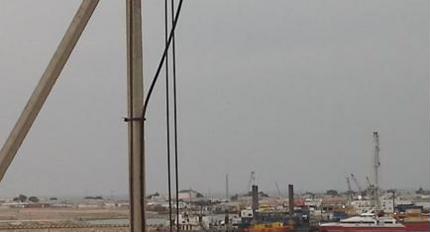Documents
This section features public documents and files uploaded by the stakeholders and custodians of the Caspian Sea environment.
 Chirag Environmental Survey 2010 Akvamiljø Caspian 10504Mon, 16/04/2018 - 15:37Sampling was conducted from the vessel Svetlomor 2 by personnel from AmC, the Ministry of Ecology and Natural Resources (MENR) and SOCAR. Sediment samples for physical and chemical analysis consisted of 2 replicates, while 3 replicates were taken for biological analyses. Analyses were carried out at AmC Caspian Environmental+6
Chirag Environmental Survey 2010 Akvamiljø Caspian 10504Mon, 16/04/2018 - 15:37Sampling was conducted from the vessel Svetlomor 2 by personnel from AmC, the Ministry of Ecology and Natural Resources (MENR) and SOCAR. Sediment samples for physical and chemical analysis consisted of 2 replicates, while 3 replicates were taken for biological analyses. Analyses were carried out at AmC Caspian Environmental+6
- Description
Sampling was conducted from the vessel Svetlomor 2 by personnel from AmC, the Ministry of Ecology and Natural Resources (MENR) and SOCAR. Sediment samples for physical and chemical analysis consisted of 2 replicates, while 3 replicates were taken for biological analyses. Analyses were carried out at AmC Caspian Environmental Laboratory.
The sediment characteristics and metal concentrations around Chirag were found to be highly variable within and between stations, with generally little change being observed from 2008. Despite the detection footprint remaining unchanged from previous years, LAO concentrations continue to reduce. THC and PAH concentrations were generally low, with the highest concentrations being recorded at stations directly to the northeast of the platform.
Ba concentrations were highest within the LAO contamination footprint, suggesting the higher concentrations to be the result of historical drilling discharges. As observed on previous years the concentration of Cd was also highest within this area. The LAO and Ba footprint, indicating the extent of contamination from platform drilling discharges was found to extend 1250m NE, 500m N, 750m E, 1000m W and 250m S of the Chirag platform position.
The 2010 macrobenthic community was numerically dominated by polychaetes and amphipods.
Abundance and species richness were highest at stations on the periphery of the survey area and decreased towards the platform. The lowest abundance an taxonomic richness were found at stations within the LAO and Ba footprint, with the sparsest communities being present at stations directly to the northeast of the platform. Despite a continual reduction in hydrocarbon concentrations from 2006, a general reduction in abundance and taxonomic richness has been observed at the Chirag survey area from 2000 to 2008. This negative trend has reversed in 2010, with a survey wide increase in annelid abundance and amphipod abundance and taxonomic richness being observed. No distinct change in the physicochemical characteristics has been observed between 2008 and 2010 that can be attributed to the abrupt reversal of these trends.
No additional physicochemical impacts from operational activities have been observed between 2008 and 2010 and in general contamination levels continue to reduce
- Attached documents
- Metadata
- Year
- 2010
Document

